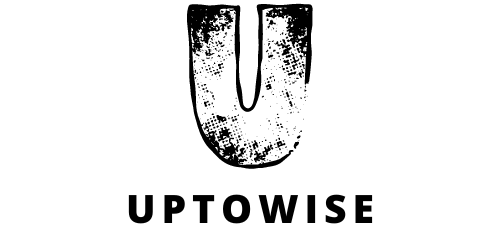Table of Contents
Ever stood in front of an audience, feeling the weight of their expectations? Whether it’s presenting a new business idea to your team or sharing vacation photos with friends, knowing how to communicate effectively can be a game-changer.
Presentations come in two flavors: formal and informal. Did you know that choosing the right style can significantly impact your audience’s engagement?
This article will guide you through understanding the key differences between formal and informal presentations, from preparation to delivery. You’ll learn what makes each unique and how mastering both styles can make you a more versatile communicator.
Understanding Formal and Informal Presentations
Formal presentations are like a well-planned event. Informal ones feel more like a chat with friends.
Definition of formal presentation
A formal presentation is a structured, planned talk. People give these in professional settings like board meetings, academic seminars, or conferences. It’s all about sharing ideas with others after you have had time to prepare.
The key is thorough research and rehearsing your speech. This makes sure you know your stuff, can time it right, and feel more confident in front of others.
For such presentations, engaging the audience is super important. You want to grab their attention from the start and keep them interested. This might mean using visuals or telling stories that connect with what you’re saying.
Even though it’s serious business, finding ways to involve listeners can make a big difference in how well they receive your message.
Definition of informal presentation
An informal presentation is like a chat with friends. It’s casual and relaxed. People give these talks in a way that feels more like a conversation than a formal speech. They might not plan much, or at all, before they start talking.
Sometimes, they just go with the flow and talk about things as they come to mind. This type of presenting is great for connecting with the audience on a personal level.
In these presentations, folks often interact more with their listeners. They ask questions and let people share ideas during the talk. This makes everyone feel part of the discussion.
Informal presentations can happen anywhere – in meetings, over coffee, or even online through video chats. Unlike formal ones, you don’t see many charts or slides here; it’s mostly speaking off-the-cuff and sharing thoughts spontaneously.
Key Differences Between Formal and Informal Presentations
Formal presentations often need lots of planning and a serious tone. Informal ones are more relaxed, with room for fun chat and stories.
Preparation and planning
Planning a formal presentation needs a lot of work. You have to do your homework, sort out what you’ll say, and decide on your goal. Knowing who will listen helps too. For these talks, picking the right visual aids is a must to get your point across.
Informal presentations are more laid back. They can happen on the fly without much prior prep. This way allows you to change things up as needed based on how your listeners react or what they’re interested in at the moment.
In both cases, getting ready and setting things up ahead of time makes sure your message hits home with the audience.
Audience and attire
Audience and attire matter a lot in presentations. For formal presentations, you need to dress up more. Think suits, ties, and dresses that look professional. This kind of dress helps you seem like an expert.
People take you seriously when you look sharp. In these settings, the crowd expects this type of style because it matches the serious tone.
Casual dress is totally fine when giving an informal presentation. You might wear jeans or something comfy. The atmosphere feels friendlier and more relaxed.
Since the approach is flexible, dressing down fits right in with talking easily and having fun interactions with your audience.
Visual aids and engagement
Visual aids play a big role in formal presentations. They help make the presentation look more professional and believable. These could be things like slides, charts, or even videos that support what the speaker is saying.
In these settings, having good visual aids can really make a difference in how people see your work.
On the other hand, informal presentations focus on talking with the audience more than showing them things. Instead of many slides or complex graphics, these might use simple pictures or no visual aids at all.
The main goal here is to get everyone talking and thinking about the topic. Handouts might be given out for people to follow along or take home as well.
How to Master Both Presentation Styles
Getting good at both formal and casual talks is key. For this, mix practice with learning from others who do it well.
Tips for creating a formal presentation
Start by clearly defining your goals to give direction to your presentation. Know who will be watching and listening. This means learning about your audience so you can make the talk just right for them.
An outline helps keep things clear and structured, making sure every part of your presentation flows well into the next.
Use powerful visuals that grab attention but don’t distract from what you’re saying. Practice how you’ll deliver the message several times; this helps with confidence and timing. To really connect, weave storytelling into your talk, making complex ideas easier to understand and memorable.
Your choice of words should persuade effectively—make people see things from your perspective. Always aim to personalize each segment of your presentation to both engage and inform those listening.
For creating presentations using AI that impresses any formal audience, take a look at PopAi pro or explore specific options to create stunning slides using an ai for presentation.
These resources can significantly improve how well you speak in public by offering structured ways to organize content visually engagingly.
Tips for giving an informal presentation
Keep your informal presentation strong from the get-go to spark conversation. Storytelling and inviting your audience to join in are essential. This style is all about being relaxed and spontaneous, like you’re just chatting with friends.
Make sure to look everyone in the eye. Speak like you’re having a great talk over coffee, not delivering a formal report.
Jokes are perfectly okay if they fit the moment. They can make your message more memorable and fun for everyone listening. Your goal? To be engaging and relatable, making every listener feel like part of the story you’re telling.
Importance of versatility
Being able to switch between formal and informal presentations shows you are flexible and adaptable. Versatility means you can meet different audience expectations easily. It helps in making your communication more effective.
Knowing when to share a story or provide details makes a big difference. Your ability to choose the right style affects how well people understand and retain what you say.
Versatility also makes interacting with the audience smoother, whether it’s through a structured debate or an open discussion. This adaptability is key for success in business communication.
You Can Also Read About: TheWifeVo: Simplifying Family Life with Virtual Organization
Resources for improving presentation skills
Plenty of options exist for sharpening your presentation skills. For starters, thorough research is key to deepening your understanding of any topic. This step can’t be skipped if you aim to deliver with confidence.
Practicing your delivery, then, builds on that foundation; it’s how timing gets perfected and nerves get calmed. Enhancing public speaking skills involves more than just knowing what to say—it’s about mastering how you say it, from the pacing to the volume.
Polishing speech delivery also means getting better at using visual aids effectively and engaging the audience. Techniques like crafting a powerful opening or weaving storytelling into formal presentations make messages stick.
Work on excelling in Q&A sessions by preparing answers ahead of time—this shows mastery over your subject matter and helps maintain control during interactive segments.
Conclusion
Knowing the difference between formal and informal presentations can change how you talk to people. You’ve learned that formal ones need lots of prep and a serious tone, while informal ones are more about fun and being in the moment.
These ways help you reach out better, whether at work or with friends. Simple tricks make both types powerful. This means anyone can get good at them with some practice. So, take what you’ve learned and start making your talks more interesting today!


